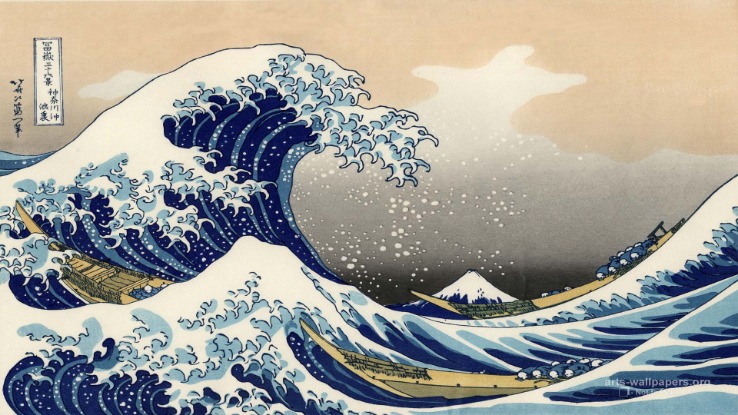You know that feeling when you walk out of a roaring, pachinko-parlor-blaring, neon-soaked street in Shinjuku and suddenly duck into a tiny, quiet izakaya? The world outside is a hurricane of sensory input, but inside, it’s just the gentle sizzle of yakitori on the grill and the low murmur of conversation. That, right there, is the fundamental, beautiful contradiction of daily life in Japan. It’s a country that has mastered the art of holding two opposing ideas in its hands at once, and not just making it work, but thriving on it.
We often get this polished, minimalist image of Japan—the Zen garden, the tea ceremony, the impeccable order. And that’s absolutely real. But so is the other side: the chaotic, adorable, and sometimes wonderfully weird world of pop culture and entertainment. Living here is a constant, delightful dance between these two poles.
The Daily Grind: More Than Just Salaryman Stereotypes
Let’s talk about the daily routine. Yes, the famed Japanese work ethic is no myth. The morning train rush is a sight to behold, a silent, determined river of people moving with a kind of weary synchronicity. But to define the daily life by that alone is a huge miss. The magic is in the small rebellions against the grind.
It’s in the impeccable, curated fashion of the office worker who somehow makes a uniform look like a high-fashion statement. It’s in the five-minute escape to the convenience store—the holy konbini—for a 100-yen coffee and a freshly steamed pork bun that is, against all logic, genuinely delicious. It’s the after-work beer shared with colleagues, not out of obligation, but as a necessary pressure valve. The structure of the day is rigid, but the little pockets of personal joy and relief are what make it sustainable.
A Love Letter to the Konbini and Beyond
Speaking of convenience stores, can we just take a moment? The 7-Elevens, FamilyMarts, and Lawson’s of Japan are not like their counterparts elsewhere. They are culinary hubs, community centers, and lifelines. Where else can you grab a full meal, pay your electricity bill, pick up a package, and buy a new shirt at 11 PM? The food is unironically good. I’ve had ekiben (train station lunch boxes) that are works of art and conbini egg salad sandwiches that I would defend in a heated debate.
This obsession with quality and convenience bleeds into the entire food culture. From a vending machine that dispers hot canned coffee to a $300 Michelin-starred sushi omakase, there’s an underlying respect for the product and the process. Ramen isn’t just student fuel; it’s a religion with endless regional varieties. The first time you slurp down a bowl of rich, pork-bone tonkotsu ramen, you get it. It’s comfort, history, and flavor, all in a ceramic bowl.
Pop Culture: The Wonderful Weirdness
And then we flip the script entirely. If daily life is about order and respect, pop culture is often about creative chaos. This is the realm of giant robots, virtual pop stars, and anime characters endorsing everything from credit cards to government initiatives. Walking through the Akihabara or Harajuku districts is like stepping into a living cartoon.
What’s fascinating is how this isn’t seen as childish. It’s just… culture. Grown adults openly collect figures of their favorite anime characters. Themed cafes—from owl cafes to ones based on a specific video game—are packed. It’s a society that understands the importance of play and fandom, of having a passion that exists outside the boundaries of a spreadsheet. This vibrant scene is constantly evolving, and for those who want to dive deeper into its latest trends and stories, a great resource is the Nanjtimes Japan.
The Witty Side: Unspoken Social Rules
Beneath the surface of both the serene and the chaotic lies a complex web of social cues and unspoken rules. The Japanese sense of humor is often dry, situational, and deeply witty. It’s less about telling jokes and more about a shared understanding of life’s absurdities.
You see it in the hilarious and sometimes baffling English on t-shirts and product packaging (“Let’s Sports!”). You see it in the satirical manga that poke fun at political and corporate life. You especially see it in the art of honne and tatemae—your true feelings versus your public facade. Navigating this is a constant, subtle game. It’s knowing that a slight, almost imperceptible intake of breath might be the equivalent of a firm “no.” It’s understanding that the phrase “it might be difficult” doesn’t mean maybe; it means absolutely not.
This creates a society that is incredibly polite and smooth-running on the surface, but if you learn to read the signs, it’s also full of witty, subtle commentary on the sheer ridiculousness of modern life.
Finding the Balance
So, what’s the takeaway from all this? The Japanese lifestyle isn’t a single thing. It’s not just calmness, and it’s not just craziness. It’s the dynamic, daily balance between them.
It’s finding a moment of peace watching the cherry blossoms fall, and then going to karaoke and screaming your lungs out to an anime theme song with your friends. It’s the respect for a centuries-old craft, right alongside the enthusiastic embrace of the next big technological gadget. It’s a culture that values the group, but also creates spaces for incredibly niche individual passions to flourish.
Maybe that’s the real secret. It’s not about choosing one Japan over the other. It’s about appreciating the fact that you can have both—and that the tension between the two is what makes the whole experience so incredibly vibrant and alive.


